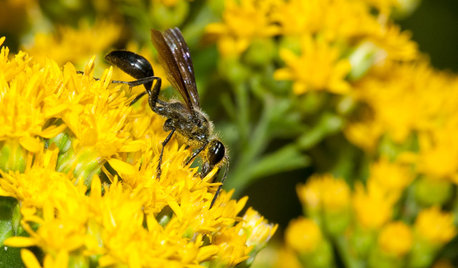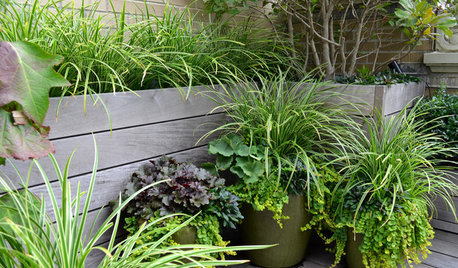Bermuda Grass, too late to kill it?
vuwugarden
13 years ago
Related Stories

COLORWhen Color Could Kill: Stories From the History of Paint
Delve into paint's storied past — what you learn about its history and modern incarnations may surprise you
Full Story
GARDENING GUIDESGreat Design Plant: Purple Needle Grass, California’s State Grass
The long-lived, drought-tolerant Stipa pulchra is as admired for its benefits as for its good looks
Full Story
GARDENING GUIDES5 Great Grasses for a New Lawn
Learn about maintenance, wear tolerance, ideal climate and more for these top turf choices to pick the right one for you
Full Story
LANDSCAPE DESIGNIs It Time to Consider Fake Grass?
With more realistic-looking options than ever, synthetic turf can be a boon. Find the benefits and an installation how-to here
Full Story
CENTRAL PLAINS NATIVE PLANTS10 Top Grasses for the Central Plains
Low-maintenance grasses provide seasonal interest and wildlife habitat, and aid good design
Full Story
GRASSES10 Ways to Use Ornamental Grasses in the Landscape
These low-maintenance plants can add beauty, texture and privacy to any size garden
Full Story
GARDENING GUIDESMeet the Grass-Carrying Wasp, a Gentle Pollinator of Summer Flowers
These fascinating insects nest in wood cavities and hollow plant stems
Full Story
PLANTING IDEASCreate High-Impact Container Gardens With Grasses
When it comes to adding drama, texture and panache to a pot, these strappy species are hard to beat
Full Story
MOST POPULARHow to Start a Cool-Season Vegetable Garden
Late summer and late winter are good times to plan and plant cool-season crops like salad greens, spinach, beets, carrots and peas
Full Story
GRASSESHow to Rock a Lawn
Weekend Project: The key to healthy grass begins with the soil. If turf works for you, here’s how to fix it and keep it looking its best
Full StoryMore Discussions







jerrytx
vuwugardenOriginal Author
Related Professionals
Foothill Ranch Landscape Architects & Landscape Designers · Allentown Landscape Contractors · Elgin Landscape Contractors · Huntley Landscape Contractors · North Haven Landscape Contractors · Ocoee Landscape Contractors · Rockwall Landscape Contractors · South Portland Landscape Contractors · Tamarac Landscape Contractors · Woodland Landscape Contractors · Suisun City Landscape Contractors · Archdale Stone, Pavers & Concrete · Farragut Window Contractors · Hacienda Heights Window Contractors · Sarasota Window ContractorsCarla
vuwugardenOriginal Author
jerrytx
roselee z8b S.W. Texas
vuwugardenOriginal Author
Lynn Marie
plantmaven
roselee z8b S.W. Texas
vuwugardenOriginal Author
Lynn Marie
carrie751
justintx
fairview
plantmaven